World’s Worst Access to Clean Water
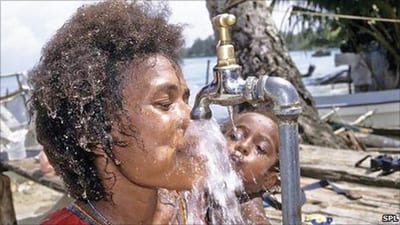
Papua New Guinea, where 60% of the population lives without a safe water supply, has the poorest access to clean water in the world, according to a study released by organisation WaterAid. A report on the state of the world’s water showed Equatorial Guinea, Angola, Chad and Mozambique joining Papua New Guinea in the bottom five of a table ranking countries according to the percentage of households with access to clean water. Globally, 650 million people are living without an “improved” source of drinking water, which includes public taps, protected wells, rainwater or water piped into households.
The study also explored the high costs of water access, examining why the poorest communities often foot the largest bill. When there is no public access to clean water, people are forced to buy their water from street vendors, tanker trucks or other informal delivery services, all of which charge a premium. In Papua New Guinea’s capital, Port Moresby, the average cost for 50 litres of water from a delivery service is € 1.85, which accounts for half of a typical daily salary. This compares with €0.09 for 50 litres of piped water in the UK.
Why Britain’s Rivers are at Risk?

Britain uses a whopping 13 trillion litres of water every year and most of this water comes from our rivers. The average person uses about 150 litres a day which is 15% more than the UK used 25 years ago. Several parts of the country are still experiencing drought despite a bit of a wet summer. In fact, the Environment Agency (EA) has calculated that in the south-east of England there is less water available, per person, than in Morocco or Egypt. As Egypt is mostly desert this quite a feat!
A third of the clean water in Britain is used every day just for flushing the loo! Thames Water has a licence to take 1 million litres of water from the River Kennet every single day – this is enough to fill five Olympic-size swimming pools! There is a limit to how much water can be taken from rivers and important underground water sources known as aquifers before damage is done.
Britain currently exceeding this limit and this is affecting the rivers and the unique wildlife that live in their special habitats. Britain’s rivers and chalk streams are unique and are home to thousands of species of mammal, fish, birds and insects. So, all the rivers and their fragile ecosystems and biodiversity need protecting before it is too late.
Water companies should be investigating how to use and take water in a more sustainable way – to sustain the river water levels and sustain the abundance of life that water brings. But, there are many things you can do to use less water and help take the strain off of Britain’s beautiful and useful rivers. In the end, it’s not just Britain’s rivers that are running out of water – it’s the whole world!
New Type of Catalyst for Splitting Water
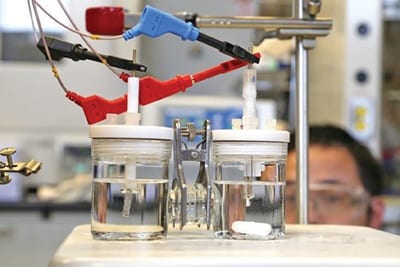
With a combination of theory and clever, meticulous gel-making, scientists have developed a new type of catalyst that’s three times better than the previous record-holder at splitting water into hydrogen and oxygen – the vital first step in making fuels from renewable solar and wind power.
One way to store intermittent solar and wind energy is to use it to split water into oxygen and hydrogen, and then use the hydrogen as fuel. Now scientists at SLAC and the University of Toronto have invented a new type of catalyst that makes this process three times more efficient. In this water-splitting device on the Toronto campus, hydrogen is bubbling up from the left electrode and oxygen is bubbling up from the right one.
The research, published in the journal Science, outlines a potential way to make a future generation of water-splitting catalysts from three abundant metals – iron, cobalt and tungsten – rather than the rare, costly metals that many of today’s catalysts rely on.
Threats to Freshwater Ecosystems
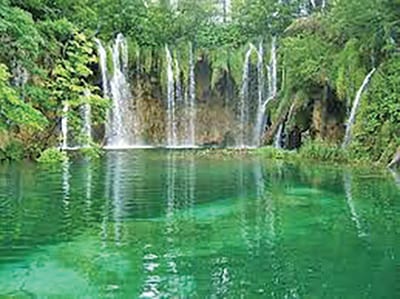
Within about 10 years most people on the planet will face life with water shortages. Half the world’s major rivers are being seriously polluted and/or depleted.
Too often we pit one need against another as we use rivers and lakes to meet our needs. We grow food in ways that send pollution into our drinking water. We often manufacture products in ways that use more water than is necessary. We clear away forests without thinking about the erosion that will wash into our waters.
We can and must make better choices or we will continue to spoil the very resources we need and cherish.
NASA Measures Raindrop Sizes to Understand Storms
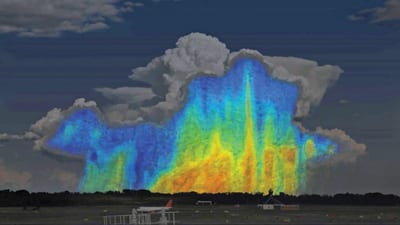
For the first time, scientists have three-dimensional snapshots of raindrops and snowflakes around the world from space.
This is a conceptual image showing how the size and distribution of raindrops vary within a storm. Blues and greens represent small raindrops that are 0.5-3mm in size. Yellows, oranges, and reds represent larger raindrops that are 4-6mm in size. A storm with a higher ratio of yellows, oranges, and reds will contain more water than a storm with a higher ratio of blues and greens.
Industry Wants EU Standard on Drinking Water Products

The creation of a European system of testing materials in contact with drinking water is moving closer thanks to a think-tank founded by manufacturers and trade organizations. The Industry Consortium for Products in Contact with Drinking Water (ICPCDW) is hoping to establish universal standards and certification across Europe.
The Consortium is close to producing draft guidelines for plastics and is now looking for industry experts in elastomers for the next phase of its activity. “Testing is very expensive and very time-consuming. It is a barrier to trade because it means if a product has been approved for use in the UK you can’t sell it in the Netherlands, Germany, Italy or France – because they all have their own testing regimes.
There are 18 member states which have different certification requirements. The ICPCDW is building on work done by a previous collaboration between France, Germany, The Netherlands and the UK, which attempted to draw up a harmonized set of standards and certification procedures. By bringing together trade organizations and manufacturers’ representatives from across Europe, ICPCDW aims to draw up draft regulations, which could then be adopted individually by countries or become part of European regulation.
Water Stress Likely in Asia by 2050
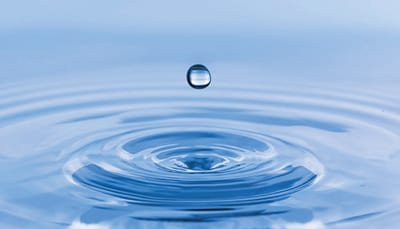
Economic and population growth on top of climate change could lead to serious water shortages across a broad swath of Asia by the year 2050, a newly published study by Massachusetts Institute of Technology scientists has found.
The study deploys detailed modelling to produce what the researchers believe is a full range of scenarios involving water availability and use in the future. In the paper, the scientists conclude there is a “high risk of severe water stress” in much of an area that is home to roughly half the world’s population. Having run a large number of simulations of future scenarios, the researchers find that the median amounts of projected growth and climate change in the next 35 years in Asia would lead to about 1 billion more people becoming “water-stressed” compared to today.
Romania to Invest €72.9 million in Upgrading Water Services
The region Mehedinti in South-West Romania is improving water and wastewater services. The upgrade consists of rehabilitating four wastewater treatment plants and 27 wastewater pumping stations. Moreover, two hundred kilometres of water infrastructure, thirteen new water- pumping stations and ten new reservoirs will be realised. The investment will improve the quality of drinking water to meet EU directives and will increase access to wastewater services.
The upgrade will take place in ten towns, including the capital Drobeta Turnu Severin. As a result, more than 15,000 people will be connected to the drinking water network and almost 30.000 people to the wastewater network. According to the latest maps of the European Environment Agency, none of the Romanian WWTP’s is at the moment compliant to European regulation.
Segura River in Spain Wins European Riverprize
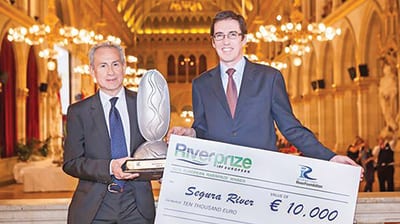
The Segura River of Spain has won the European Riverprize 2016 of the International River Foundation (IRF). President of the Segura River Basin Authority, Miguel-Angel Rodenas, received the prize on Thursday 3 March in Vienna in Austria. The prize is a recognition of the extraordinary return to health of the river following extensive restoration efforts over the past thirty years.
The Segura River Project has successfully restored the health of the river, with advanced wastewater schemes now supplying reclaimed water to the agriculture industry which rapidly boomed after Spain became a member of the EU. This once polluted and water-stressed river in Europe’s driest basin has been transformed from an exposed sewer to a healthy, vibrant river, home to otter, migratory birds, and other flora and fauna, and the reuse of irrigation water has allowed increased agricultural, leisure and recreational activities.
How European Companies are Coping With Water Stress

Because of climate change companies worldwide are facing new challenges. Water scarcity, flooding, droughts and water quality have become serious operating risks. Carbon Disclosure Project (CDP) recently published data on how companies globally deal with these risks, including Europe. Companies out of the UK, France, Spain, Italy and Germany reveal how they were struck by the consequences of climate change.
Out of 93 European companies who responded to the CDP-survey, there are 58 reports of the impact of climate change. These reports vary from repairing infrastructure after flooding to changing operations because of growing water scarcity and closing the business down after flooding. In a former CDP-study became clear European companies are worldwide leading in water governance.
In 2013 in Europe companies seem to be more aware of the risks of water stress. By now the risks have become more evident globally. More than 70% of the western US has been hit by severe drought. Losses to California’s economy total are estimated at $2.2 billion in 2015. And also China has been suffering from a nationwide shortage of both water and energy resources.
The CDP-report ‘From water risk to value creation’ analyses the disclosures from 174 Global 500 companies in sectors with high water vulnerabilities and impacts. It concludes water insecurity is likely to constrain growth. Almost one quarter (22%) of responding companies report that issues around water could limit the growth of their business. Of these, one-third expects that constraint to be felt in the next 12 months.